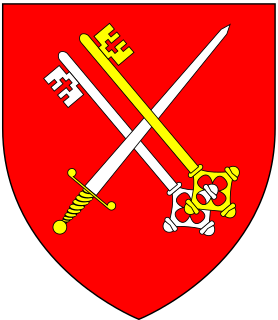 W
WThe Bishop of Winchester is the diocesan bishop of the Diocese of Winchester in the Church of England. The bishop's seat (cathedra) is at Winchester Cathedral in Hampshire. The Bishop of Winchester holds ex officio the office of Prelate of the Most Noble Order of the Garter since its foundation in 1348, and Bishops of Winchester often held the positions of Lord Treasurer and Lord Chancellor ex officio. During the Middle Ages, it was one of the wealthiest English sees, and its bishops have included a number of politically prominent Englishmen, notably the 9th century Saint Swithun and medieval magnates including William of Wykeham and Henry of Blois.
 W
WÆthelhard was a Bishop of Winchester then an Archbishop of Canterbury in medieval England. Appointed by King Offa of Mercia, Æthelhard had difficulties with both the Kentish monarchs and with a rival archiepiscopate in southern England, and was deposed around 796 by King Eadberht III Præn of Kent. By 803, Æthelhard, along with the Mercian King Coenwulf, had secured the demotion of the rival archbishopric, once more making Canterbury the only archbishopric south of the Humber in Britain. Æthelhard died in 805, and was considered a saint until his cult was suppressed after the Norman Conquest in 1066.
 W
WÆthelwold of Winchester was Bishop of Winchester from 963 to 984 and one of the leaders of the tenth-century monastic reform movement in Anglo-Saxon England.
 W
WSherard Falkner Allison was a British Anglican bishop and successively the Bishop of Chelmsford and the Bishop of Winchester.
 W
WLancelot Andrewes was an English bishop and scholar, who held high positions in the Church of England during the reigns of Elizabeth I and James I. During the latter's reign, Andrewes served successively as Bishop of Chichester, of Ely, and of Winchester and oversaw the translation of the King James Version of the Bible. In the Church of England he is commemorated on 25 September with a lesser festival.
 W
WCardinal Henry Beaufort, Bishop of Winchester, was an English prelate and statesman who held the offices of Bishop of Lincoln (1398) then Bishop of Winchester (1404) and was from 1426 a Cardinal of the Church of Rome. He served three times as Lord Chancellor and played an important role in English politics.
 W
WThomas Bilson was an Anglican Bishop of Worcester and Bishop of Winchester. With Miles Smith, he oversaw the final edit and printing of the King James Bible. He is buried in Westminster Abbey in plot 232 between the tombs of Richard II and Edward III. On top of his gravestone there is a small rectangular blank brass plate, which says the following:MEORIAE SACRVM / HIC IACET THOMAS BILSON WINTONIENSIS NVPER EPISCOPVS / ET SERENISSIMO PRINCIPI IACOBO MAGNAE BRITTANIAE REGI /POTENTISSIMO A SANCTIORIBVS CONSILIJS QVI QVVM DEO ET / ECCLESIAE AD ANNOS VNDE VIGINTI FIDELITER IN EPISCO / PATV DESERVISSET MORTALITATE SUB CERTA SPE RESVRRECTI: /ONIS EXVIT DECIMO OCTAVO DIE MENSIS IVNIJ ANO DOMINI /M.DC XVI. AETATIS SVAE LXIX. Here lies Thomas Bilson formerly bishop of Winchester and counsellor in sacred matters of his serene highness King James of Great Britain who when he had served God and the church for nineteen years in the bishopric laid aside mortality in certain hope of resurrection 18 June 1616 aged 69.
 W
WEdward Harold Browne was a bishop of the Church of England.
 W
WPeter Courtenay was Bishop of Exeter (1478–87) and Bishop of Winchester (1487-92), and also had a successful political career during the tumultuous years of the Wars of the Roses.
 W
WWalter Curle was an English bishop, a close supporter of William Laud. Born in Hatfield, Hertfordshire, he was educated at St Albans School and at Christ's College, Cambridge, transferring to Peterhouse, of which college he later was elected Fellow.
 W
WTimothy John Dakin is an Anglican bishop. He was the general secretary of the Church Mission Society (CMS) and the South American Missionary Society (SAMS) prior to his consecration. He was the Bishop of Winchester from 2011 - 2022 and, as such, an ex officio a member of the House of Lords. From 2013 he served as the Bishop for Higher and Further Education.
 W
WRandall Thomas Davidson, 1st Baron Davidson of Lambeth, was an Anglican priest who was Archbishop of Canterbury from 1903 to 1928. He was the longest-serving holder of the office since the Reformation, and the first to retire from it.
 W
WBrian Duppa was an English bishop, chaplain to the royal family, Royalist and adviser to Charles I of England.
 W
WWilliam Edington was an English bishop and administrator. He served as Bishop of Winchester from 1346 until his death, Keeper of the wardrobe from 1341 to 1344, treasurer from 1344 to 1356, and finally as chancellor from 1356 until he retired from royal administration in 1363. Edington's reforms of the administration – in particular of royal finances – had wide-ranging consequences, and contributed to the English military efficiency in the early stages of the Hundred Years' War. As Bishop of Winchester he was responsible for starting an extensive rebuilding of Winchester Cathedral, and for founding Edington Priory, the church of which still stands today.
 W
WRichard Foxe was an English churchman, the founder of Corpus Christi College, Oxford. He was successively Bishop of Exeter, Bath and Wells, Durham, and Winchester, and became also Lord Privy Seal.
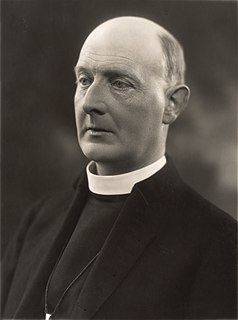 W
WCyril Forster Garbett was an Anglican bishop and author. He was successively the Bishop of Southwark, the Bishop of Winchester and the Archbishop of York from 1942 to 1955.
 W
WStephen Gardiner was an English bishop and politician during the English Reformation period who served as Lord Chancellor during the reign of Queen Mary I and King Philip.
 W
WWilliam Giffard, was the Lord Chancellor of England of William II and Henry I, from 1093 to 1101, and Bishop of Winchester (1100–1129).
 W
WHenry of Blois, often known as Henry of Winchester, was Abbot of Glastonbury Abbey from 1126, and Bishop of Winchester from 1129 to his death. He was a younger son of Stephen Henry, Count of Blois by Adela of Normandy, daughter of William the Conqueror and Matilda of Flanders. Thus, he was a younger brother of Stephen, King of England. Henry was also a major patron of the arts.
 W
WBenjamin Hoadly was an English clergyman, who was successively Bishop of Bangor, of Hereford, of Salisbury, and finally of Winchester. He is best known as the initiator of the Bangorian Controversy.
 W
WRobert Horne was an English churchman, and a leading reforming Protestant. One of the Marian exiles, he was subsequently bishop of Winchester from 1560 to 1580.
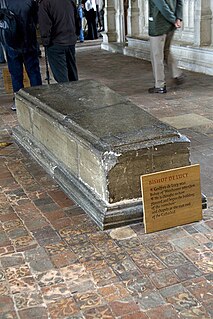 W
WGodfrey de Luci was a medieval Bishop of Winchester.
 W
WPeter Mews was an English Royalist theologian and bishop. He was a captain captured at Naseby and he later had discussions in Scotland for the Royalist cause. Later made a Bishop he would report on non-conformist families.
 W
WJames Montague was an English bishop.
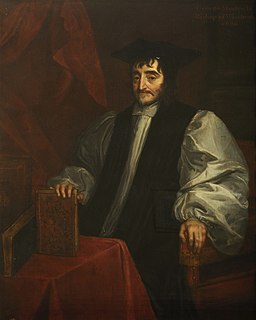 W
WGeorge Morley was an English Anglican bishop, Bishop of Worcester and then of Winchester.
 W
WRichard Neile was an English churchman, bishop successively of six English dioceses, more than any other man, including the Archdiocese of York from 1631 until his death. He was involved in the last burning at the stake for heresy in England, that of the Arian Edward Wightman in 1612.
 W
WBrownlow North was a bishop of the Church of England.
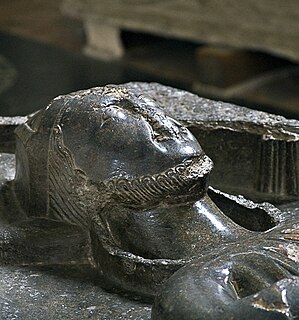 W
WPeter des Roches was bishop of Winchester in the reigns of King John of England and his son Henry III. He was not an Englishman, but rather a native of the Touraine, in north-central France.
 W
WHerbert Edward Ryle was an English Old Testament scholar and Anglican bishop, successively serving as the Bishop of Exeter, the Bishop of Winchester and the Dean of Westminster.
Michael Charles Scott-Joynt was an English bishop and a Prelate of the Order of the Garter. He was appointed Bishop of Winchester, one of the five senior bishoprics in the Church of England, in 1995. He had previously served as Bishop of Stafford in the Diocese of Lichfield from 1987 and before that as a canon residentiary at St Albans Cathedral. On 10 October 2010, it was announced that Scott-Joynt intended to retire, which he did in May 2011.
 W
WStigand was an Anglo-Saxon churchman in pre-Norman Conquest England who became Archbishop of Canterbury. His birth date is unknown, but by 1020 he was serving as a royal chaplain and advisor. He was named Bishop of Elmham in 1043, and was later Bishop of Winchester and Archbishop of Canterbury. Stigand was an advisor to several members of the Anglo-Saxon and Norman English royal dynasties, serving six successive kings. Excommunicated by several popes for his pluralism in holding the two sees, or bishoprics, of Winchester and Canterbury concurrently, he was finally deposed in 1070, and his estates and personal wealth were confiscated by William the Conqueror. Stigand was imprisoned at Winchester, where he died without regaining his liberty.
 W
WCharles Richard Sumner KG was a Church of England bishop.
 W
WSwithun was an Anglo-Saxon bishop of Winchester and subsequently patron saint of Winchester Cathedral. His historical importance as bishop is overshadowed by his reputation for posthumous miracle-working. According to tradition, if it rains on Saint Swithun's bridge (Winchester) on his feast day it will continue for forty days. The name was originally spelt Swithhun.
 W
WEdward Stuart Talbot was an Anglican bishop in the Church of England and the first Warden of Keble College, Oxford. He was successively the Bishop of Rochester, the Bishop of Southwark and the Bishop of Winchester.
 W
WJohn Thomas was an English bishop.
 W
WAnthony Wilson Thorold was an Anglican Bishop of Winchester in the Victorian era. The son of a Church of England priest, he also served as Bishop of Rochester. It was in that role that he travelled throughout North America and met with leaders of the Church of Jesus Christ of Latter-day Saints. While he wrote a number of devotional books, he is best remembered for having recruited Isabella Gilmore to revive the female diaconate in the Anglican Communion.
 W
WSir George Pretyman Tomline, 5th Baronet was an English clergyman, theologian, Bishop of Lincoln and then Bishop of Winchester, and confidant of William Pitt the Younger. He was an opponent of Catholic emancipation.
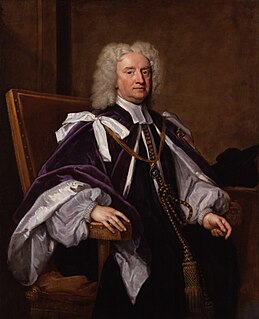 W
WSir Jonathan Trelawny, 3rd Baronet was a British Bishop of Bristol, Bishop of Exeter and Bishop of Winchester. Trelawny is best known for his role in the events leading up to the Glorious Revolution which are sometimes believed to be referenced in the Cornish anthem The Song of the Western Men.
 W
WCharles Trimnell (1663–1723) was an English bishop. He was a Whig in politics, and known for his attacks on High Church views, writing on the subordination of the Church of England to the state. After the accession of George I of Great Britain in 1714 he was in the royal favour and influential.
 W
WWalkelin was the first Norman bishop of Winchester.
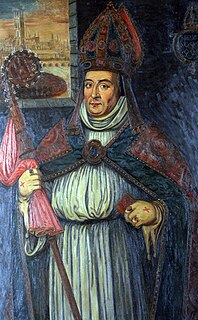 W
WWilliam Waynflete, born William Patten, was Provost of Eton (1442–1447), Bishop of Winchester (1447–1486) and Lord Chancellor of England (1456–1460). He is best remembered as the founder of Magdalen College and Magdalen College School in Oxford.
 W
WSamuel Wilberforce, FRS was an English bishop in the Church of England, and the third son of William Wilberforce. Known as "Soapy Sam", Wilberforce was one of the greatest public speakers of his day. He is now best remembered for his opposition to Charles Darwin's theory of evolution at a debate in 1860.
 W
WRichard Willis (1664–1734) was an English bishop.
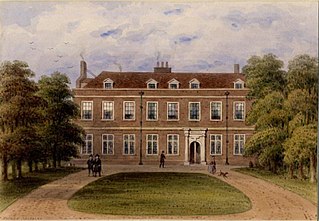 W
WWinchester House, demolished, housed the Bishops of Winchester from 1664 to the early 19th century when in London. Their diocese for this purpose had bought the 17th-century part of Chelsea Place from Charles Cheyne in 1664. It replaced in function the shell remnants of Winchester Palace on the South Bank, Southwark left by the Wars of the Three Kingdoms. In 1821, after the house fell into disrepair, the bishop gained an Act that allowed the sale of the house and its ground of 2.5 acres to the trustees of the Cadogan Estate. In 1825, the trustees obtained a further Act to demolish the property and build new houses on the site. Demolition was complete by 1836, but the site was still vacant in 1847. By 1850, there were ten houses at the northern end, and four at the southern by 1851. The area is now known as Oakley Street.
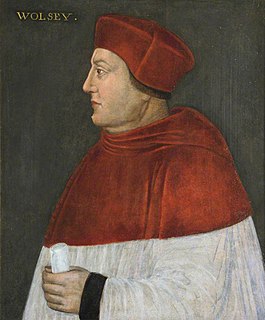 W
WThomas Wolsey was an English statesman and Catholic bishop. When Henry VIII became King of England in 1509, Wolsey became the king's almoner. Wolsey's affairs prospered, and by 1514 he had become the controlling figure in virtually all matters of state. He also held important ecclesiastical appointments. These included the Archbishopric of York—the second most important role in the English church—and that of papal legate. His appointment as a cardinal by Pope Leo X in 1515 gave him precedence over all other English clergy.
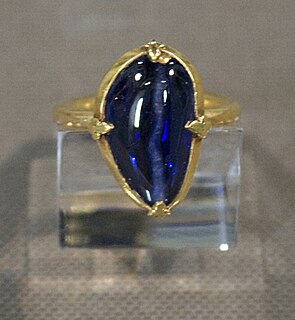 W
WHenry Woodlock was a Roman Catholic Bishop of Winchester. He is sometimes referred to as Henry de Merewell, from the place of his birth, a manor near Winchester belonging to the bishop.
 W
WFrank Theodore Woods was a Church of England bishop. He was the Bishop of Peterborough from 1916 to 1923 before being translated to the See of Winchester, where he remained until his death.
 W
WWilliam of Wykeham was Bishop of Winchester and Chancellor of England. He founded New College, Oxford, and New College School in 1379, and founded Winchester College in 1382. He was also the clerk of works when much of Windsor Castle was built.